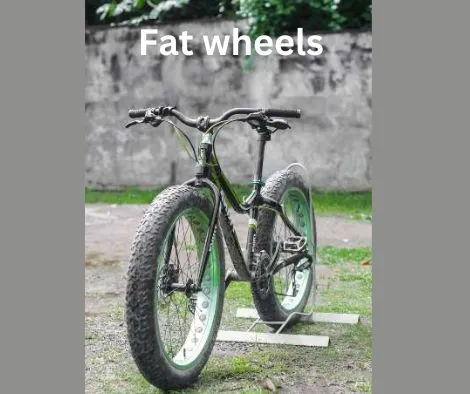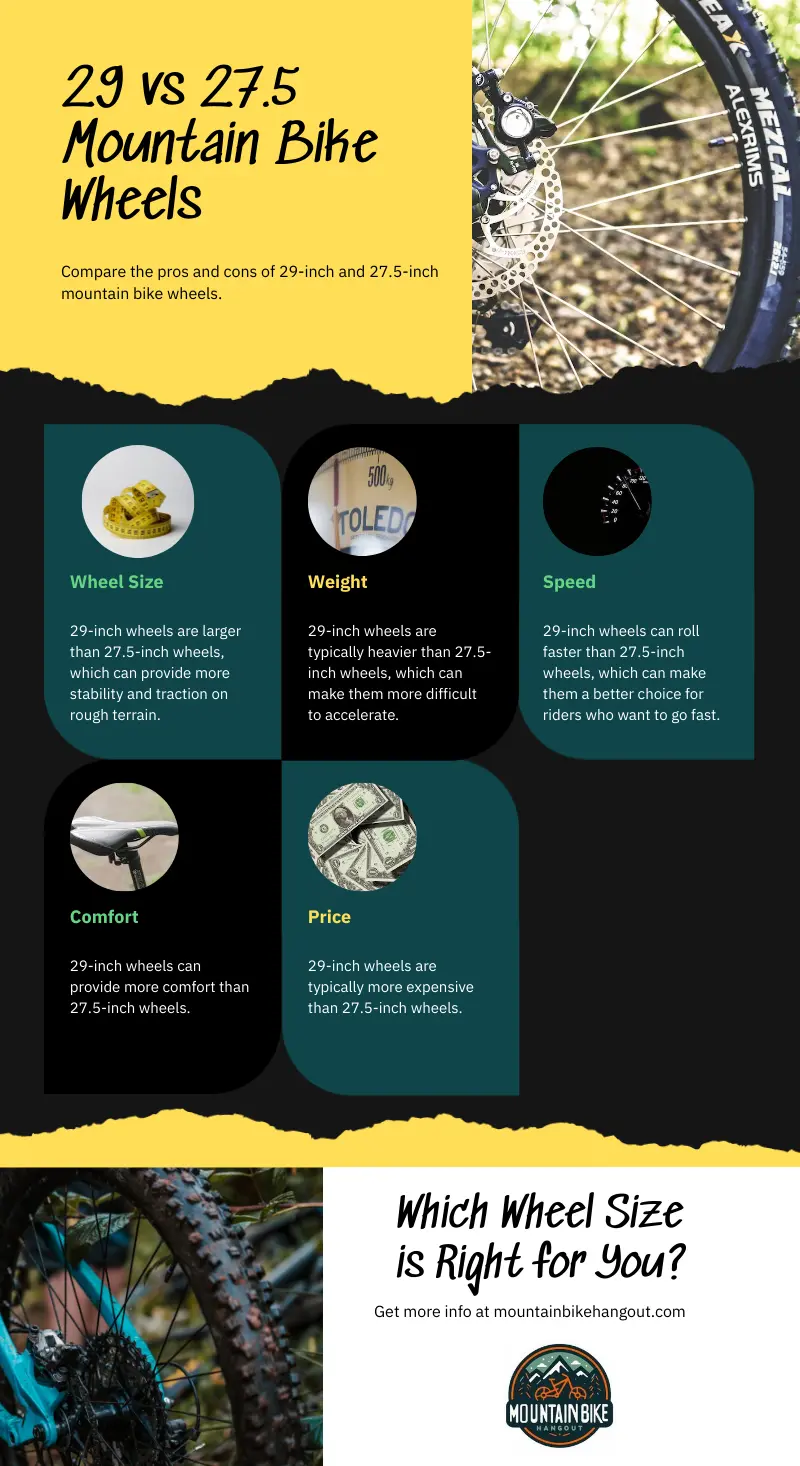As a passionate mountain biker, I can confidently say that wheel size does indeed matter, but it largely depends on the rider’s needs and the terrain. Larger wheels, like 29-inch ones, are great for rolling over obstacles smoothly and maintaining momentum, making them ideal for long, steep climbs and fast, rugged descents.
On the other hand, smaller wheels, such as 27.5-inch, offer better maneuverability and quicker acceleration, which is perfect for technical trails and tight turns. Each wheel size has its unique advantages, and choosing the right one can significantly enhance your riding experience. For beginners, it’s often recommended to try different sizes to see what feels most comfortable and suits their riding style.
Let’s dive deeper into this topic.
What is the difference between sizes?
One of the highly debated topics on the trail is what size wheel you should have your mountain bike. For newcomers, this becomes confusing, as you want to pick the right wheel size from the start.
Furthermore, why do mountain bike wheel measurements matter? We can give you a couple of reasons for this topic. You can get three different sized wheels the 26-inch, 27.5-inch (650B), and the 29-inch type.
- The wheel size can alter different things:
- Your riding position
- Riding Style
- How comfortable you feel on your ride
- Furthermore, it determines the level of resistance on trails.
- With a bigger wheelbase, you can overcome more significant obstacles.
- On the other hand, it all comes down to the angle of attack revolving around the point, which the tire strikes an obstacle and at which angle the strike occurs.
Taking all of the above into consideration, imagine you have a 26-inch bike and come across a big log in the middle of the road. A fact is that the wood will strike the bike at a higher point on the tire than it would a 27.5 or 29-inch wheel.
Furthermore, you get a steeper angle at the same time with a 27.5, and more force reverberates back against the tires, making it difficult to control and stabilize the forward momentum of your bicycle.
Traveling at high miles per hour makes a huge difference when equipped with a 27.5 monster wheel as it destroys anything on the trail. You might be interested in my post on reasons why wheel spokes break.
| Wheel Size | Common Name | Advantages | Disadvantages | Best For |
|---|---|---|---|---|
| 26-inch | Quick acceleration, nimble handling | Less traction and rollover capability | Tight, technical trails; dirt jumping | |
| 27.5-inch (650B) | Balance of maneuverability and rollover capability | May not excel in extreme conditions as 26″ or 29″ | Versatile riding, general trail use | |
| 27.5+ inch | Plus Size | More grip, softer ride, can run at lower pressures | Heavier, can be less nimble than standard 27.5″ | Rough terrain, riders seeking comfort |
| 29-inch | 29ers | Better traction, smoother over obstacles, maintains momentum | Can be less maneuverable in tight spaces | Cross-country, trail riding |
| 29+ inch | Plus Size | Increased traction, smoother ride over bumps | Heavier, potentially less nimble than standard 29″ | Rough terrain, comfort-oriented riding |
26 inch
Compared to the 27.5 and 29 wheel dimensions available, the 26-inch are smaller wheels that are lighter and more agile and offer a better acceleration making them great for fast-flowing, steep climbs, and quick-turning trails.
These wheels are responsive, leaving you with loads of freedom on the saddle but can become tough to control when cycling rough terrains.
Furthermore, the contact patch places the handlebars and saddle closer to one another, making it harder for you to maintain your balance.
For this reason, the mountain biking market prefers a larger wheel like the 27.5 or 29er as it makes you cycle:
- More stable
- It is more reliable
- And more predictable
With these entire advantages put together, you can enjoy a better and higher ride. While the bikes for dirt jumping still come with the standard 26-inch wheels or smaller, you will find that downhill bikes have either a 26-inch or 27.5 wheels that are larger wheels.
Here we have compiled info for you an easy-to-understand guide in deciding what wheel size will work best for you and your mountain bike.
29 inch
These wheels are more prominent and give you a smoother ride to allow the bike to flow over different objects; it comes across on the trail.
The 29er is a larger wheel with a different contact patch offering you a lower center of gravity. Therefore, you get a steadier feel, but take some time to readjust to a new position when riding. You get more control, stability, and strength when riding.
Even your top speed is higher and helps you to maintain your mountain bike, but can make the acceleration levels fall. While the 29-inch does reach a higher rate, it does not feel fast, and you may find your bikes overly rigid, making it difficult to maneuver.
27.5 inch
These 27.5 tires came onto the market to solve the 26/29-inch wheels problems. Furthermore, 27.5 helps solve many issues, and the market is booming when it comes to this sized tire.
You get a smoother ride that is more rapidly compared to the 29er and do not bend much as well. The 27.5 wheelset allows you to handle your mountain bike better, making it easier to control and provides durability as well.
You get a faster ride that is stronger and agile, with the larger wheels giving you a more fluent transition. Therefore, as you can see, each wheel size provides you with different riding effects when used on your bike.

What is best?
Now that you have seen the differences of each bike, does a bigger wheel size make riding your bike better? Well, if you decide on the 29ers that are larger, you get a faster movement over rough courses compared to the 26-inch wheels.
Why the diameter of the 29er is more extensive in circumference, however, it will turn slower, but moves you forward faster compared to the 26-inch wheels. The smaller wheel takes less torque to get you moving, but the monster wheel gives a faster speed.
Now, you may be wondering what else to look for when deciding on the right wheel size for your bike.
Height considerations
When you start looking at buying a mountain bike, the fit of the bikes plays an important part, as you need to find one that suits your riding style.
You do not want to feel awkward and cramped and want to get the most out of your pedaling. Therefore, you need the bike frame, handlebars, and seat at the right height.
So typically, the first step is to calculate your frame size and need to consider your height and bikes inseam. To determine this, you can use a calculator to decide on the correct frame size as well.
However, when it comes to the wheel size, you find them categorized in sizes for your primary use. You see them commonly available for mountain bikes in the 26-inch or 29-inch range.
Here it all depends on your needs, and the 29er has a sizing made for CYCLOCROSS or huge bike riders.
According to some manufacturers, the 29ers are best suited for tall riders as it makes it difficult for 5 foot and shorter to use. However, with any bicycle, you get short riders and love riding with 29ers.
There are plenty of 5’5” cyclists racing with them and do fantastic on the trails. Therefore, the important thing is to test your bikes with all of the wheels sizes mentioned before fitting your mountain bike with them.

Final thoughts
With all of the different sized wheels available — at the end of the day, it all comes down to your needs when selecting the correct wheel size.
To choose the best wheel size will need you to test them first and see what works best for you. Are you starting with mountain biking?
Then the 27.5 tires will provide you with control, speed, smoothness, and the stability needed. However, you will find your favorite set of wheels in no time when testing them out.
Sources:
https://www.bbc.co.uk/bitesize/clips/zym8mp3
https://us.cnn.com/2020/05/26/cnn-underscored/best-bike-equipment/index.html
